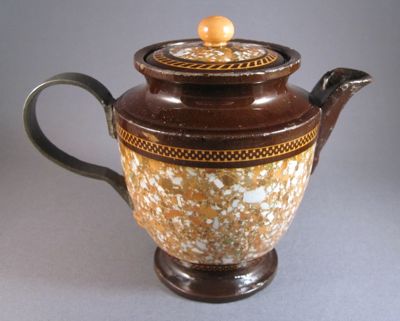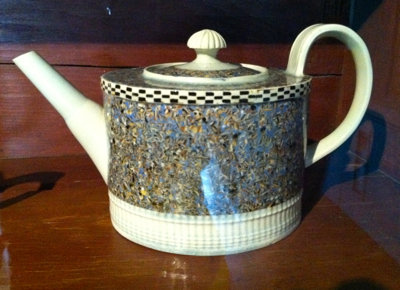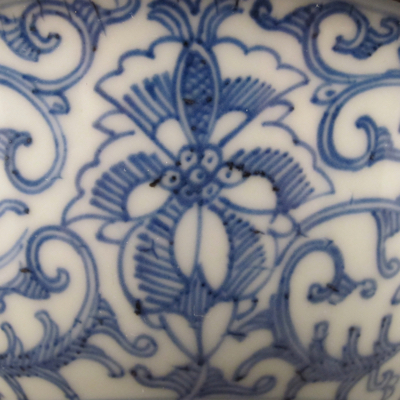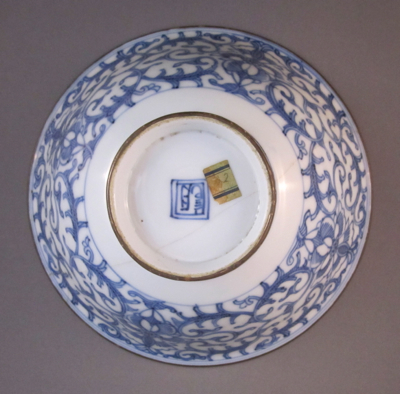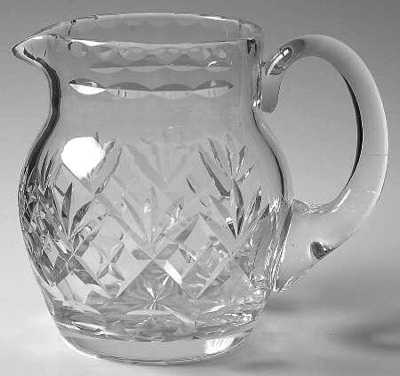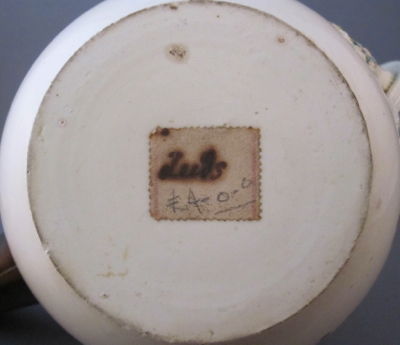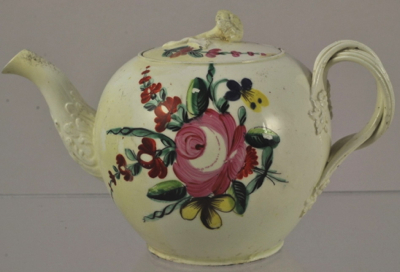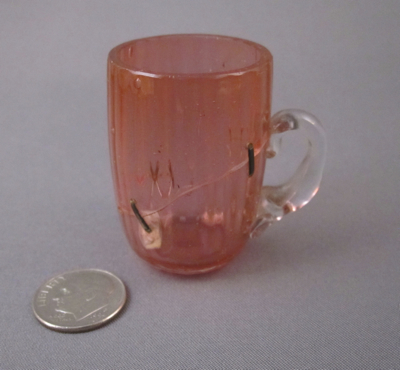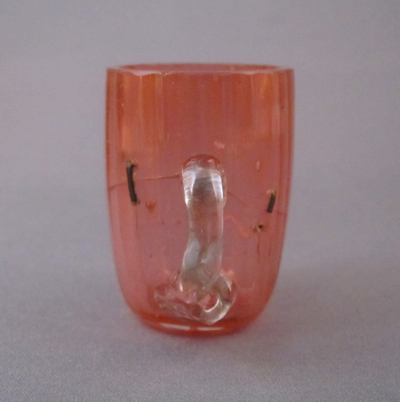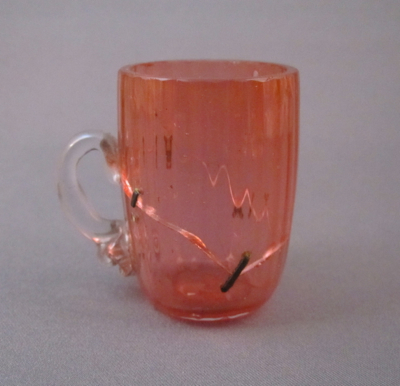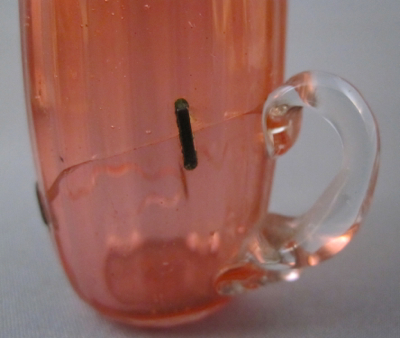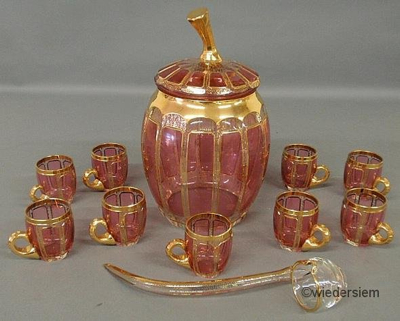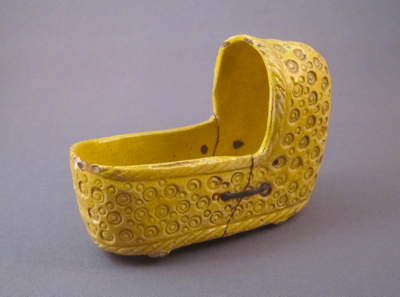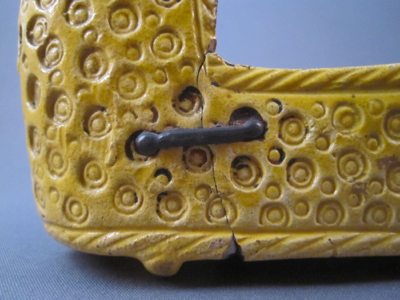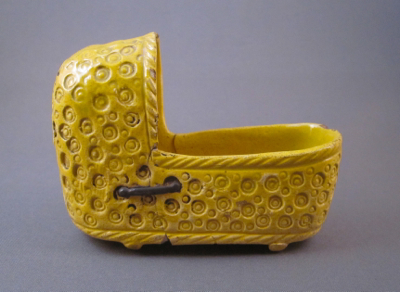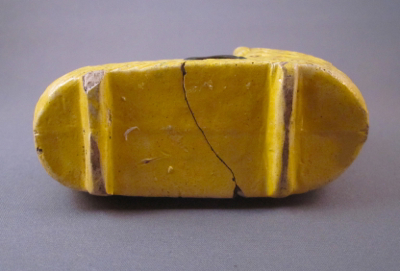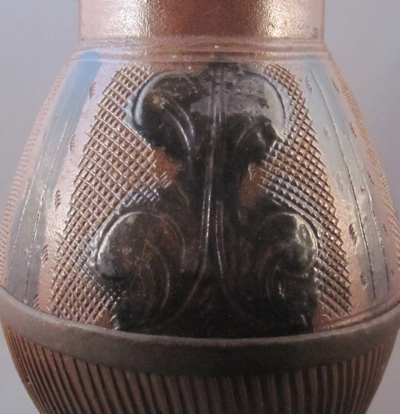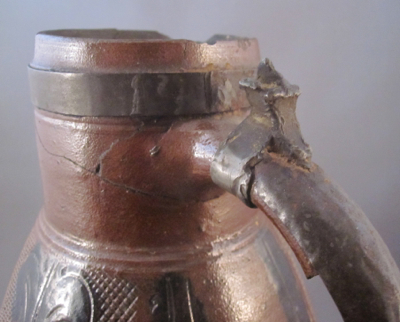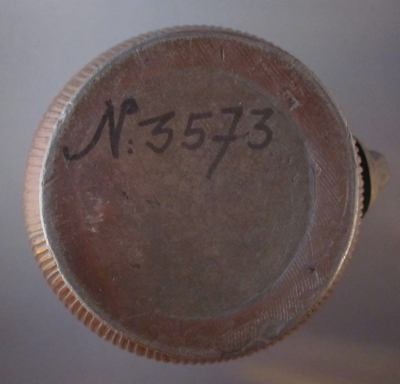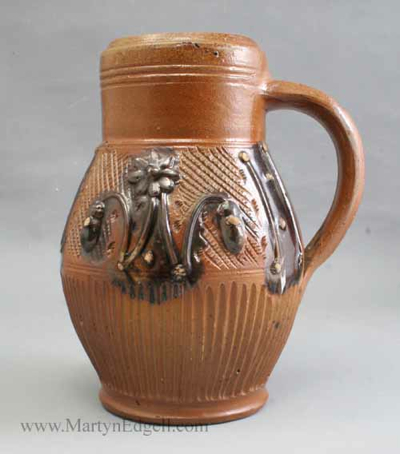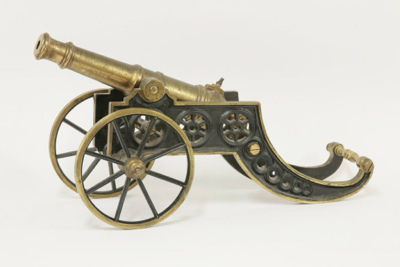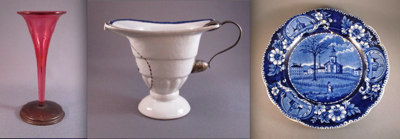This handsome redware urn-shaped teapot was made in England in the late 18th century and stands 4-1/2″ tall. Its confetti-like agate surface decoration is inlaid with ochre, orange, brown, olive, blue, and white bits of clay. Encircling the middle is a slip-filled checkered rouletted band of pumpkin and brown. All that remains of the original handle, which must have broken off sometime in the 19th century, is a molded bearded mask terminal, set ominously askew. Growing out of its forehead is the lower part of a pewter handle, fashioned by a tinker to replace the broken original. This replacement follows the form of the simple loop-shaped original.
I found this piece in Maine a few years ago and was reminded of it during a recent trip to the Shelburne Museum in Vermont, where I spotted a teapot on display with similar agate surface decoration, shown in the last image below.
This teapot is another example of agate surface decoration, and although it differs in form and coloring, the checkerboard band decoration is similar to my collaborative whiteboard template.
Photo taken at the Shelburne Museum in Shelburne, VT.


